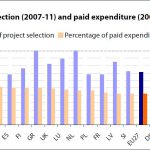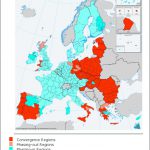At present, the European Union (EU) faces the difficult task of exiting the economic crisis while achieving the transition to a more dynamic and competitive economy. Cohesion policy and its Structural Funds are one of the main EU instruments to sustain economic growth, while reducing disparities between regions. These funds are allocated to Member States (MS) under a complex legal framework, according to the level of development of their regions.

Paradoxically, according to researchers, the most economically disadvantaged regions are also experiencing the greatest difficulties in spending (absorbing) these funds.
Among the reasons accounting for low absorption in the 2007-13 period are: the economic crisis, insufficient administrative capacity, changes in national/regional governments, and the effects of national sectoral reforms.
To increase absorption, in 2011 the Council and Parliament (EP) adopted a Regulation allowing a temporary increase of EU co-financing rates by 10% for MS experiencing financial difficulties. In 2013, the European Commission proposed additional measures to reduce the risk for some MS of losing unspent funds.
Financial experts assert that the involvement of banks and private companies in Structural Funds implementation can increase absorption. The EP highlights the need for simplification and flexibility of rules at both EU and national level to improve absorption.
To read the whole briefing click here.











[…] the EU cohesion policy, to which an important share of the EU budget is allocated. Another briefing investigates the reasons why some regions – and often the most economically disadvantaged […]